
‘Jack Arnold began his career directing and producing dozens of industrial films and documentaries for the government and the private sector. In 1953 he joined Universal Studios, where he directed one of the first films in the popular juvenile-delinquent genre of that decade, Girls in the Night (1953). Telling, as its tagline put it, the “Tense, Terrifying Truth About the Big City’s Delinquent Daughters,” it never rose above its B-film budget and cast, but it did help pave the way for now-canonical films in the genre, The Wild One (1953; directed by Laslo Benedek) and The Blackboard Jungle (1955; directed by Richard Brooks).
‘Arnold’s next film was the groundbreaking It Came from Outer Space (1953). Based on a Ray Bradbury story, the quietly creepy yarn about aliens who take over the identities of small-town Arizonans after their spaceship crashes is considered one of the seminal films in the science-fiction genre. It also boasted one of the more effective uses of the then-popular 3-D process. The Glass Web (1953), also shot in 3-D, was a murder mystery starring Edward G. Robinson and John Forsythe.
‘With Creature from the Black Lagoon (1954), Arnold cemented his position as the new master of “cinema fantastique.” More an old-fashioned monster movie than an exercise in science fiction, Creature was shot in 3-D but achieved its fame largely through release in a standard format. It provided the blueprint for scores of subsequent science-fiction films, most of them offering inferior versions of its effective rhythms, gripping score, and constant suspense. Enormously successful at the box office, it spawned the sequel Revenge of the Creature (1955), which Arnold also directed. The Man from Bitter Ridge (1955) was an unremarkable Lex Barker western, but the more-memorable Tarantula (1955) was second only to the previous year’s Them! (directed by Gordon Douglas) in effectiveness; both films featured “big bugs” that were created by nuclear accidents. Arnold’s next films were the formulaic crime thriller Outside the Law and the western Red Sundown (both 1956).
‘In 1957 Arnold directed the classic The Incredible Shrinking Man, an adaptation of a novel by author Richard Matheson, who also wrote the script. Although its special effects are crude compared with contemporary cinema, the film imparts a sense of wonder more vital than that of many big-budget epics. It centres on a man who, again the victim of a nuclear accident, shrinks to the size of an atom, battling giant spiders and cats along the way. It remains an iconic film of the era.
‘The Tattered Dress (1957) was a melodrama featuring Jeanne Crain and Gail Russell. Arnold then turned back to the Old West for Man in the Shadow (1957), starring Orson Welles (in his only western) and Jeff Chandler. The Lady Takes a Flyer (1958), a mainstream romance, featured Chandler alongside Lana Turner, who played a pilot who dislikes the prospect of being domesticated. High School Confidential! (1958), a tongue-in-cheek juvenile-delinquent film starring Mamie Van Doren and Russ Tamblyn, returned Arnold to B-film territory. The Space Children (1958) was a solemn story of mysteriously brainwashed children sabotaging a nuclear test site, while, completing a very busy 1958, Monster on the Campus had a less weighty message: one should not ingest the blood of a prehistoric fish unless one wants to devolve into a prehistoric killer.
‘By the late 1950s Arnold’s most notable work had been in the science-fiction genre. In 1959, however, he directed the British production of Leonard Wibberley’s satirical novel The Mouse That Roared and turned in a comic masterpiece, in no small part thanks to the talents of Peter Sellers. With that film’s success, Arnold never made another science-fiction movie. After the Audie Murphy western No Name on the Bullet (1959), he directed the Bob Hope–Lana Turner comedy Bachelor in Paradise (1961); The Lively Set (1964), with James Darren romancing Pamela Tiffin in between drag races; another Hope film, A Global Affair (1964); and the poorly received comedy Hello Down There (1969), with Tony Randall, Janet Leigh, and Merv Griffin. Arnold later turned out a pair of blaxploitation pictures, Black Eye (1974) and Boss Nigger (1975), along with the sexploitation entry Sex Play (1974; also called The Bunny Caper).
‘While his film output began to decrease in the 1960s, Arnold remained busy in television. He directed episodes for such shows as Dr. Kildare, Gilligan’s Island, Mod Squad, The Brady Bunch, and The Love Boat. He also made several TV movies, including Sex and the Married Woman (1977) and Marilyn: The Untold Story (1980). He retired from directing in the mid-1980s.’ — brittanica
____
Stills
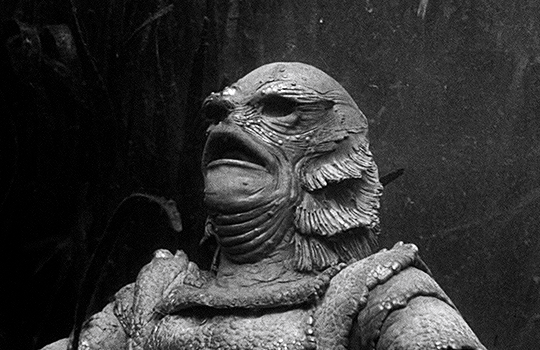
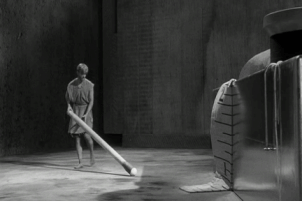

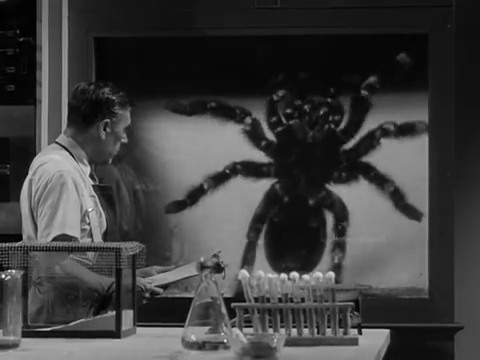
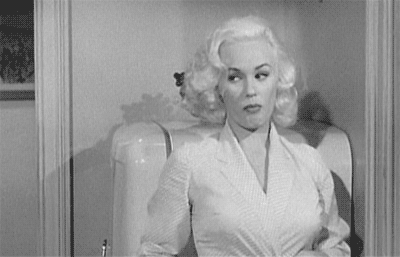
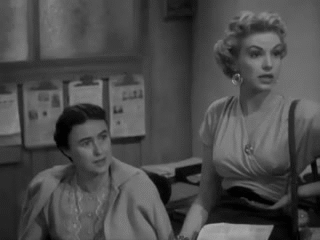


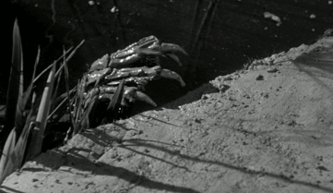
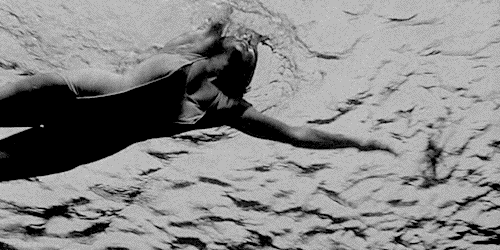


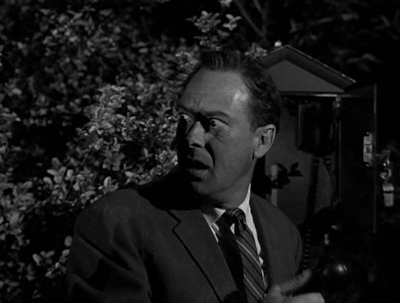

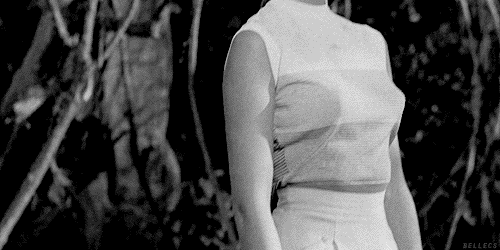









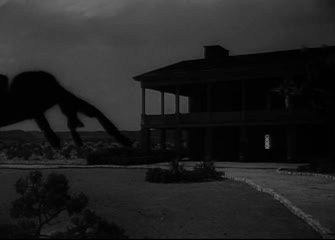

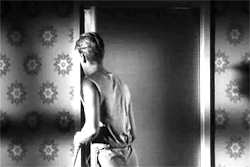


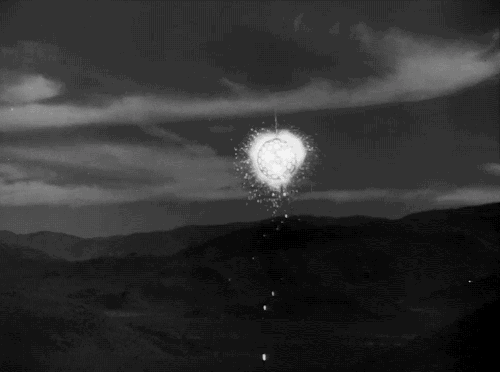
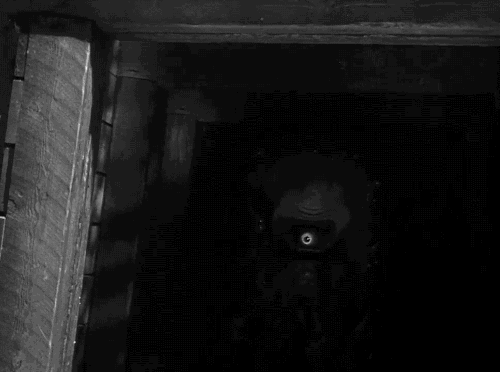

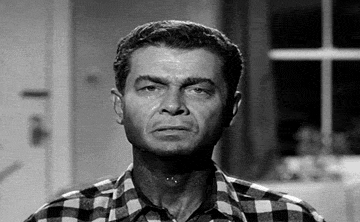




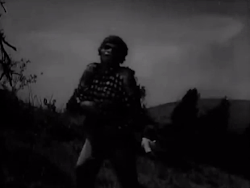
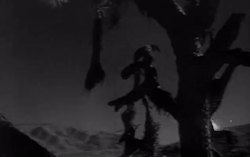




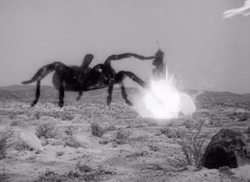


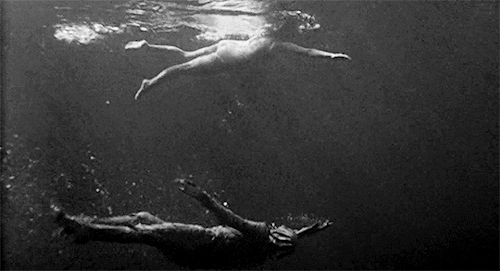
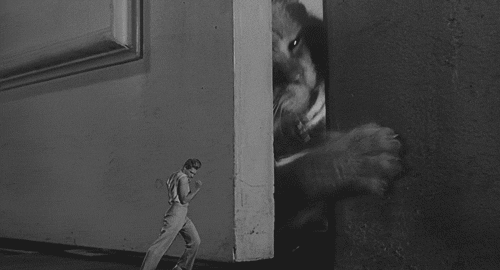
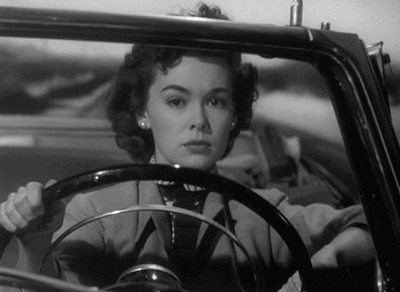

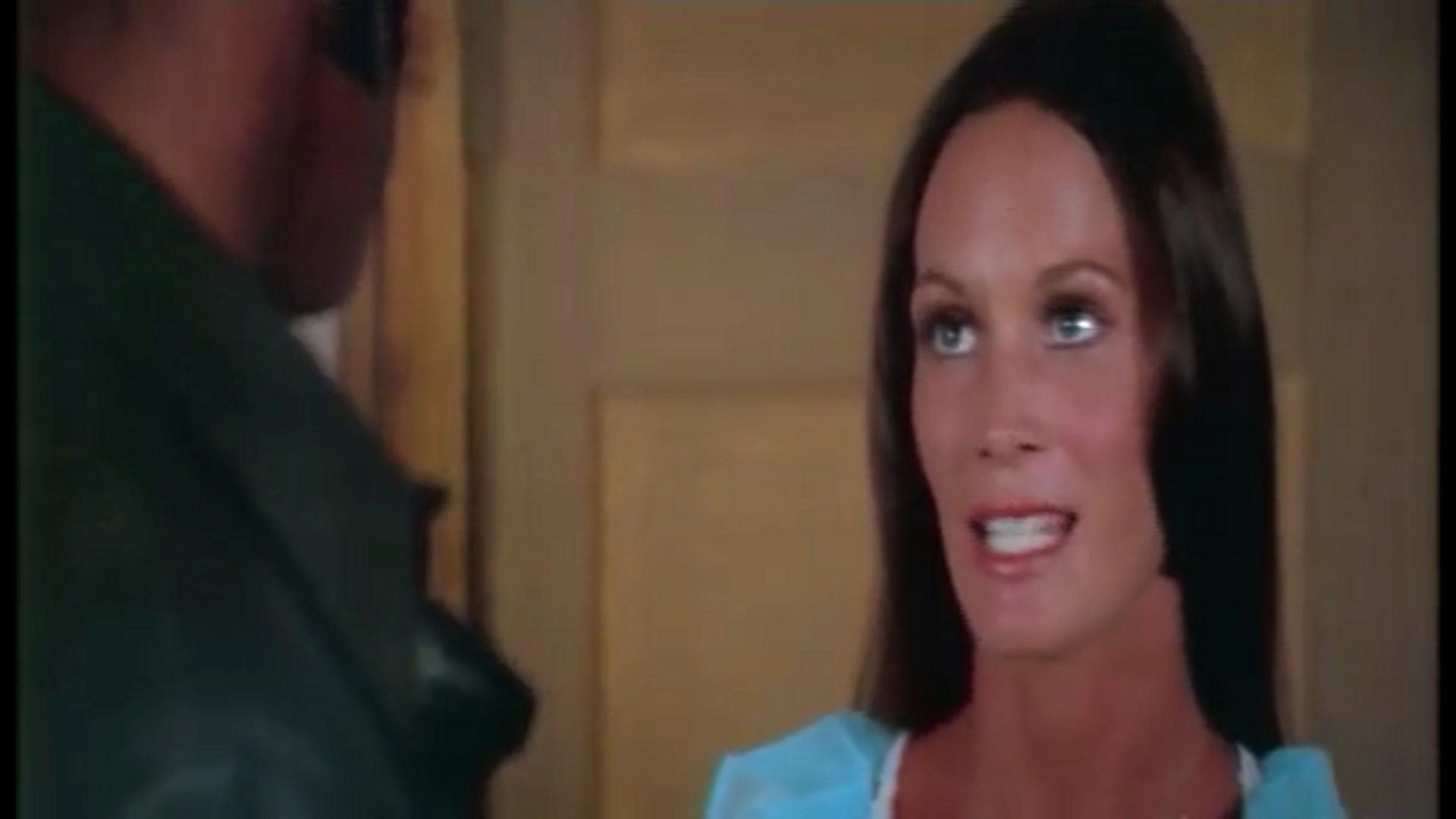
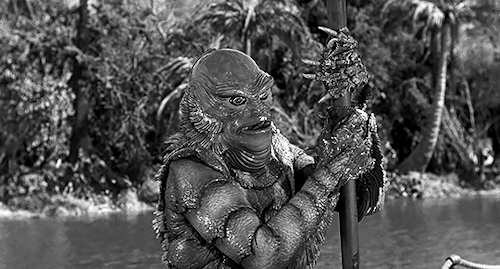
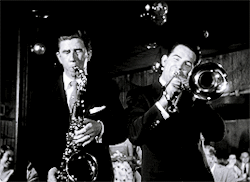
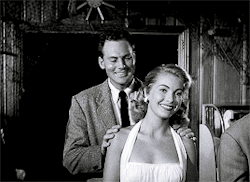
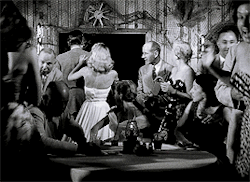
____
Further
Jack Arnold @ IMDb
Jack Arnold @ Sens Critique
JACK ARNOLD, UN HOMME AU TALENT MONSTRE
Jack Arnold on directing Orson Welles in MAN IN THE SHADOW
Gary Westfahl’s Bio-Encyclopedia of Science Fiction Film: Jack Arnold
______
Interview
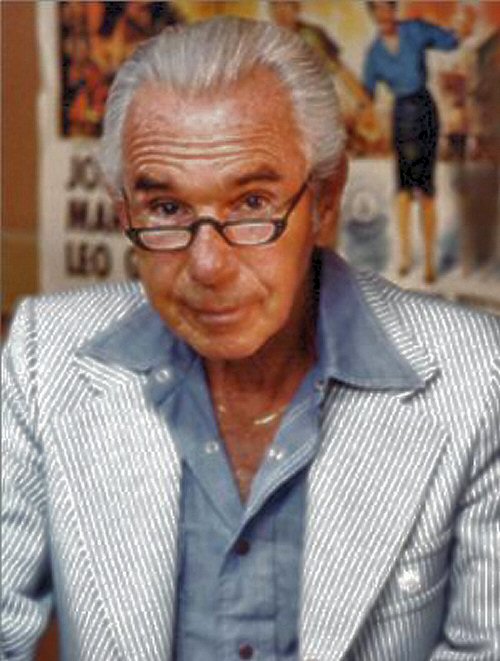
Cinefantastique: How did you get started with Universal?
Jack Arnold: I had made a documentary film in New York in 1949, when I had a documentary film company. The film was called With these Hands, and it starred Sam Levene, Arlene Francis and Joseph Wiseman. It was made for the International Ladies Garment Workers Union as a 50th Anniversary film. In those days, documentary films were a big thing, and it got great critical acclaim, was released commercially and nominated for an Academy Award. This was at the end of 1949, and Universal offered me a contract when I came out here for the Academy Awards. I was with them the duration of one seven year contract, and then I signed another seven year contract with them. Between those contracts I went to England and made a film which I consider my best work. The Mouse that Roared, for Carl Foreman’s company and Columbia Pictures. I was very proud of that film. I returned to the States, worked for Fox and MGM, and then I got into television for a while, working for CBS, for whom I did some shows such as Gilligan’s Island, which I liked as an amusing juvenile program, and then I finally returned to Universal. For three years I was executive producer and director of It Takes a Thief with Bob Wagner and Fred Astaire. Then i formed my own company, Jack’s. Our first film was Boss Nigger, a western with Fred Williamson. Our second will be later this year, a science fiction comedy called A Circle of Wheels, written by Arthur Ross.
CFQ: That will be your first science fiction film in over fifteen years. Why such a long hiatus?
Arnold: It’s partially because I was busy with other projects, partially because I didn’t encounter anything that appealed to me.
CFQ: How did you feel about the science fiction films when you were making them?
Arnold: Oh, I loved them. Those were the films I had the most fun with.
CFQ: How much creative freedom did Universal give you?
Arnold: I had complete freedom, because the studio knew nothing about the making of science fiction films. They didn’t know which end was up. So I exercised total control, final cut, everything, as long as I kept within the budgets.
CFQ: What were the budgets of some of them?
Arnold: They were fairly high for those days, about $800-900.000. In the ’50s and ’60s, that was a lot of money. And the pictures made a great deal of money, so there was never any reason to reduce the budgets.
CFQ: Richard Carlson has said that with It Came from Outer Space you were attempting to top the Warner Bros hit House of Wax. Is that true?
Arnold: We made It Came from Outer Space in 3-D, I suppose, because Warner’s had just made House of Wax and it was a new fad and Universal wanted something to compete with it. They felt a science fiction film would be the best vehicle for a 3-D film.
CFQ: The first two Creature films were also in 3-D. What problems did that present?
Arnold: It was a pain in the neck technically. When we used it for It Came from Outer Space, that started the renaissance at Universal of science fiction films. Since it was one of the first 3-D movies of the fifties, no one was really an expert in the field, so I worked very closely with the special effects and the camera departments on it. We had to find out where the lines of conversion were and where in the frame you would get the three-dimensional effect. So it was a challenge, and fun in that respect, but difficult. I thought it was a very successful film, visually, in 3-D. Wearing the red and green glasses posed no problem if the audiences’ eyes were all right, but if you had a stigmatism in one eye, you could come away with a pretty huge headache. But I thought it was very exciting, seeing a landslide falling upon you and all the other various devices. It helped create an atmosphere.
CFQ: Why was it necessary to bring in another writer and redo Ray Bradbury’s screenplay for It Came from Outer Space?
Arnold: When I was assigned the script to direct it was already in final draft and I really don’t know why they brought in another writer, except that Ray Bradbury at that time I don’t think had written any screenplays. He was strictly a novelist and had written many science fiction short stories and they felt that a screenwriter should adapt his material into a scenario, and they assigned Harry Essex to do that. I think he did a fairly good job, a very good job as a matter of fact. I remember at the opening of It Came From Outer Space I met Ray Bradbury for the first time and I asked him what he had thought of the film – he liked it. And I asked him how he felt it came out in regards to his material and he said, “I think you’ve achieved about 85%.” And I thought that was a fairly high percentage, coming from a writer. I know I was pleased, and I believe Ray was pleased.
CFQ: The settings in your films often show as much character as the people who inhabit them – particularly the desert in your It Came from Outer Space.
Arnold: I tried to do that with all of them, to make the locale a part of the atmosphere. That was a deliberate effort. The first thing I did was establish the atmosphere, so the audience would feel something before anything else was shown. And then, of course, I would continue to build on it as the story progressed.
CFQ: The central character, the alien in It Came from Outer Space, you show only for an instant.
Arnold: I debated whether I should show him at all. I had one brief cut, about a foot of film, but I knew there was nothing that supplied what the imagination would think was there. No matter how horrendous, scary or bizarre you wanted something to be, you couldn’t duplicate what an audience would imagine the creature to be. Finally, I used the cut in a flash, just once. Which is really a departure from most of the films of the period, which featured the alien and made him the focal point of the story. My focal point was what happened to the people, not what happened to the alien, who landed inadvertently on earth because he ran into trouble. I concentrated on our innate repulsion, hatred and paranoid fear of anything that’s different from us. Good or bad, if it’s different, we’re afraid of it, and we hate it.
CFQ: That’s true of The Creature from the Black Lagoon too.
Arnold: Yes. I set out to make the Creature a very sympathetic character. He’s violent because he’s provoked into violence. Inherent in the character is the statement that all of us have violence within, and if provoked, are capable of any bizarre retaliation. If left alone, and understood, that’s when we overcome the primeval urges that we all are cursed with. Man’s inhumanity to man means not only man’s inhumanity to his own kind but to anything else, especially something that’s very different from himself. You can trace the roots down to the primitive tribes, one against the other, in the cities to this block against the next block, or the Jew against the Arab, the Protestant against the Catholic, the black against the white. We have not progressed as human beings to differentiate between what is superficial and what is not. Of course, the sooner we learn the lesson, the better off we’ll be, and that’s what I tried to point out in my science fiction films, in a manner in which an audience would accept it. I don’t think they would accept a polemic. They’d walk out on it, or it would be under investigation by the House of Un-American Activities Committee or some such animal. My objective was primarily to entertain, but I also wanted to say something. If ten per cent of the audience grasped it, then I was very successful.
CFQ: What was it like working in the McCarthy era?
Arnold: Very bad. Everybody was looking for Reds under the beds. Red could mean anything, anybody who had any ideas about social progress.
CFQ: Your films don’t reflect any of the anti-communist preachings that a number of the fantasy films of the period do, such as Red Planet Mars, for example.
Arnold: And, I must say, deliberately, on my part. I thought the greatest blight on this country’s history was the McCarthy period. Not that I’m a Red; I’m far from it. But McCarthy ruined a lot of lives, a lot of people I knew were affected. It was terrible out here, just unbelievable. People couldn’t get jobs and didn’t know why, people who were in no way communist. All you had to do was be a liberal. I’m left of center politically, a registered Democrat. I guess I was just lucky.
CFQ: Getting back to the original Creature film, I’m curious about the Creature’s apparent sexual lust for Julie Adams. There is a very strong erotic motif, particularly in the deep-focus shot of him swimming under her.
Arnold: I tried to give the Creature all the basic human drives, but down at the most elemental level. I shot that sequence at Silver Springs, Florida. The parallel to sexual intercourse was that strong but was never that specific. It was symbolic, and I was trying to represent it in that manner. It was meant to affect the audience subtly.
CFQ: There is one scene where one of the characters tosses a cigarette off the side of the boat into the water, and the Creature, underneath the surface, stirs. Today, it’s easy for someone to perceive that as a statement on ecology, but at the time, what were you thinking?
Arnold: Well, in those days we were not as conscious of environment as we are today, but here is certainly a strong point being made that these people, although they are scientists, are still ignorant of what they are doing to the balance of nature that exists in this lagoon. They wreak all sorts of havoc, destroy and pollute the environment trying to capture the Creature. Occasionally I would insert a scene such as you mentioned to make the point stand out. I loved making science fiction films because they enabled me to say things which could not be stated openly in other films without seeming obvious. I think adding these other levels of meaning gave the films a little something extra. And, as I said, I was completely alone, because Universal did not know how to deal with science fiction. I said that I did, so I was regarded as the expert by them. Not that I was, but I didn’t tell them that.
CFQ: Had you seen a lot of fantasy films?
Arnold: I was brought up on them. And as a teenager I bought Weird Tales and the science fiction magazines. The movies that impressed me most were The Cabinet of Dr. Caligari and Metropolis. Some of the German UFA films were done with such a great flair and created such a mood. They were marvelous. And I loved Frankenstein, The Invisible Man and other quality American films.
CFQ: How would you account for this perennial popularity of cinefantastique from Frankenstein to The Creature from the Black Lagoon to The Exorcist?
Arnold: I don’t know. I just think that there is a great audience for these films, and I think there will continue to be a great audience for these films. I think more should be made. I hope, one of these days, to start making some myself.
CFQ: The Creature is never conclusively killed off, you just see him drift away into the darkness.
Arnold: That was done for two reasons. The studio wanted to keep him in there for a sequel, and I also loved him – I used to call him “The Beastie”, when we were making the films – and I wanted to leave it a little open, not to show him destroyed. I thought he was very sympathetic, due in no small way to the work of Ricou Browning*, who played the Creature in all the underwater sequences. We had gone down to Silver Springs to scout locations, and I was interviewing swimmers for the part. Ricou was a marvelous swimmer and his attitude about the part was right. He was amazing underwater and could stay under for almost five minutes without taking a breath. He had to wear that costume, and the only way he could take a breath was to stop when he needed air, swim over to an air hose and stick it in his mouth until he was OK again, then go back and play the scene.
CFQ: How long did it take to create the costume?
Arnold: It was a good month before we settled on the idea of it. We built a tank that still stands in the studio for testing it. We tested all kinds of things until we finally came up with the suit he liked. I remember one day I was looking at the certificate I received when I was nominated for an Academy Award. There was a picture of the Oscar statuette on it. I said, “If we put a gilled head on it, plus fins and scales, that would look pretty much like the kind of creature we’re trying to get.” So they made a mold out of rubber, and gradually the costume took shape. They gave him some human characteristics, which helped make him sympathetic. I tried to give that quality to the creatures in all of my films.
CFQ: However, the monster spider in Tarantula! is not sympathetic at all.
Arnold: No, but the scientists are, the scientists who are afflicted with that disease.
CFQ: Were you influenced by Them! in your handling of Tarantula!?
Arnold: No. I like the film, but I can’t say there was any connection between Them! and Tarantula!, which I wrote. I tried to use the scientific discoveries the botanists were making in growing larger vegetables, the work of Burbank, just taking it one or two steps further, using it on living animals. But I don’t think it was very much influenced by ants.
Because of the success of It Came from Outer Space Universal wanted another science fiction story. I wrote it, and I was assigned to direct it. We put a screenwriter on it and I worked very closely with him, and they left me quite alone. It was assigned to the same producer, Bill Alland, who produced most of the science fiction films I did. His function was more on the technical and business side of it, although we did work on the creative end together. He was very helpful, and he was a very good producer, I thought.
CFQ: Did you try to say anything in Revenge of the Creature that you weren’t able to get to in the original?
Arnold: I tried to carry the concept of “civilized” man’s misunderstanding of him a bit further. They take him to the marina and make a freak out of him because they don’t understand him. Again, it illustrates our own failings as sensitive human beings. We don’t know what to do with something that’s a bit different than we are. At the end, they manage to communicate with him a little, so at least they’ve maybe learned something.
CFQ: Why didn’t you direct The Creature Walks Among Us?
Arnold: They asked me, and I turned it down. I thought I’d just be repeating myself. There was nothing more I could add to it. John Sherwood had been my assistant director, and I thought it was a good opportunity for him to step up and become a director. I didn’t particularly like the film: I thought it was the weakest of the three. It wasn’t John’s fault, but we had already explored every area of the Creature’s personality and his relationship with the humans.
CFQ: I was also surprised that you weren’t chosen to direct This Island, Earth, which was financially the most ambitious of the Universal science fiction films of the ’50s.
Arnold: I had to go in and re-shoot a great deal of it. I was on what the studio called an “A” picture; it was either The Lady Takes a Flyer with Lana Turner or The Tattered Dress with Jeff Chandler and Jeanne Crain. They’d finished the principal photography of This Island, Earth, cut it together, and it lacked a lot of things. So they asked me if I would help them. I went in and re-shot about half of it, but I didn’t take credit for it. Specifically, I re-shot most of the footage once they reached the dying planet.
CFQ: So that classic sequence where they’re in the tubes and the mutant attacks them is your work?
Arnold: Yes, and also the escape, through the tunnel and back to the ship. It could have been a hell of a better film right from the start, I thought. They didn’t approach it the way I would have approached it. I think the whole atmosphere should have been explored. The whole idea of going back in a primeval time, into the depths of this planet and its ruins. It should have had an eerie, mystic kind of feeling, a whole tempo and atmosphere that contrasts the beginning of the film, when they begin their exploration. All the director was going for were the obvious tricks, and the obvious tricks aren’t enough.
CFQ: Actually, they don’t spend much time on Metaluna at all.
Arnold: Which was a mistake. They really should have allowed more of an opportunity to get into the atmosphere of that planet and what was happening to it. I still think science fiction films are a marvelous medium for telling a story, creating a mood, and delivering whatever kind of a social message should be delivered. I’ve been trying to find a story that I like. I did find this A Circle of Wheels which deals with a problem in a comedic way, but I shy away from the genre of the feature monster kind of thing.
CFQ: Did you turn any such films down?
Arnold: There were a couple of films they wanted to do which I rejected. They wanted to make The Incredible Shrinking Woman, which was to be a sequel to The Incredible Shrinking Man, in which his wife shrinks. I said I didn’t want to do it, and consequently it was never made. And I avoid the strange planet expedition sort of picture.
CFQ: One hears so many horror stories of director’s films being re-cut after the fact that I’m amazed you never had that trouble in all your years at Universal.
Arnold: The only fight I had with them was on The Incredible Shrinking Man, and I won it. They wanted a happy ending. They wanted him to suddenly start to grow again, and I said, “Over my dead body.” So they said, “Well, let’s test your ending.” And at the previews it went over so well, they agreed it was best to keep it. But I had something of a to-do with them at first, and I had to explain that this was not a film suited to a happy ending.
CFQ: In a way, it was a happy ending, because at least he rationalized his predicament.
Arnold: But to a studio executive, a happy ending means he starts growing again, reaches his normal size, its reunited with his wife and everything is fine. I wasn’t about to stand for that.
CFQ: How do you feel about the ending now, the impact of which is conveyed not so much in visual terms but by philosophical narration backed by stirring religious music?
Arnold: I felt it had a kind of religious significance. I don’t think it was uncinematic. I thought that the impact and the mood created as he climbed through this little grill that he couldn’t climb through before was good. The way Grant Williams played the scene and what we did with it I felt was cinematic, but that’s my opinion.
CFQ: This ending has been termed “heavy-handed” by some. Would you agree with that assessment?
Arnold: No, I don’t agree. As a matter of fact, I think it was visual. If you look at the film again and look at the end, the whole atmosphere is religious and he looks Christ-like, deliberately so. I may be in a minority of one, but I think it was cinematic and effective.
CFQ: Matheson denies responsibility for the ending of the film as it now appears. Who deserves the credit?
Arnold: I will take the credit or discredit. The ending was my idea.
CFQ: Why was it necessary to bring in writer Richard Alan Simmons to rewrite portions of Matheson’s script for The Incredible Shrinking Man?
Arnold: I was assigned the film, it was about the third draft of the screenplay that I got, and I worked on it with the producer. I don’t know why they out Simmons on.
CFQ: How did you try to compensate for the inability to show the sexual disintegration of his marriage so strongly expressed in Matheson’s book?
Arnold: It became part of the character development. As he grew smaller, the stress between the two of them increased, and it became obvious what was wrong. I didn’t consciously say, “Now we have to show this”, but it was part of the determination of the character. The counterpoint to it is his affair with the midget.
CFQ: The fact that you didn’t use a real midget was visually jarring.
Arnold: I couldn’t use one. My leading man was six-foot-one.
CFQ: You didn’t think of using some form of optical trickery?
Arnold: It was much easier playing them against oversized furniture. I used real midgets in the scene in the barroom. They were projected from behind onto a process screen, while the couple was seated in the booth and the midget walked up to say the girl was wanted at the circus. In the park scene, I had an oversized bench and sprinkler. It was easier doing that than using split screen with a real midget and Grant Williams.
CFQ: To what extent did you direct the special effects and what was your working relationship with the special effects department?
Arnold: I drew a storyboard myself on practically every frame of the film, and I worked very closely with the special effects department and Cliff Stine, who was my cameraman, on all the travelling mattes and process photography that was necessary to make the film.
CFQ: How do you feel about the extensive use of special effects in a film? Do you find it a valuable tool in the creation of mood and atmosphere?
Arnold: Yes, but I think it’s only part of the atmosphere. The atmosphere must be created in toto, not specifically by the special effects, but by the sum of it all together.
CFQ: The public in the film is depicted as unthinking and unfeeling. When they come to the house, it’s as if they’re going to the zoo.
Arnold: Well, isn’t that true? People want to look at things as a circus. Look at the kind of curious onlookers who rush to a fire or a disaster. It’s entertainment, in a macabre way. That is, unfortunately, part of our personality. There was a strange incident recently here in Los Angeles, of a woman whose car skidded down an embankment, and a man saw her trapped there for six days and wouldn’t report it. It’s unforgivable. He didn’t want to get involved. Well, to live on this earth, you have to be involved. It’s like living on a spaceship, and the balance can only be changed so far without having a disaster. I think people are more aware of this today than they were ten to twenty years ago, and in no small measure due to the influence of some of the fine science fiction films that have been made. Not particularly mine, but others, like Kubrick’s films. The point of Dr. Strangelove is unmistakable. The Incredible Shrinking Man gave me an opportunity to say some things about society.
Incidentally, we had an amusing incident during the making of that film. There is a sequence in which he’s trapped in the cellar. He’s now about an inch and a half or two inches tall, and he makes his home in an empty match box. The match box is under a heater, and the heater begins to leak. I was confronted with the problem of getting drops to fall in proportion to the size of the man. We tried everything, but no matter how we spilled the water, it didn’t look like an oversized drop. Then I remembered how in my ill-spent youth I found some strange rubber objects in my father’s drawer, and not knowing what they were, I filled them up with water, took them to the top of the building where we lived in New York, and dropped them over the side. I recalled that they looked great when they hit, and that they held a tear shape. So I asked the crew, “Has anybody got a condom on him?” With much reluctance, one of the guys finally confessed that he had one. We filled it with water, tied it at the top, and dropped it. It had a tear shape, exactly in the right proportion, and it splattered on impact. So we ordered about 100 gross of them. I put them on a treadmill and let them drop until the water pipe was supposed to burst, and it was very effective. At the end of the picture, I was called to the production office. They were going over all my expenses and they came across this item of 100 gross of condoms, so they asked me, “What the hell is that for?” I simply said, “Well, it was a very tough picture, so I gave a cast party.” And that was all I told them.
_______________
12 of Jack Arnold’s 85 works
_______________
It Came from Outer Space (1953)
‘Author & amateur astronomer John Putnam and schoolteacher Ellen Fields witness an enormous meteorite come down near a small town in Arizona, but Putnam becomes a local object of scorn when, after examining the object up close, he announces that it is a spacecraft, and that it is inhabited…’ — letterboxd
Trailer 1
Trailer 2
_____________
Creature from the Black Lagoon (1954)
‘Creature from the Black Lagoon was filmed and originally released in 3-D requiring polarized 3-D glasses, and subsequently reissued in the 1970s in the inferior anaglyph format (this version was released on home video by MCA Videocassette, Inc. in 1980). It was one of the first Universal films filmed in 3-D (the first was It Came from Outer Space, which was released a year before). It is considered a classic of the 1950s, and generated two sequels, Revenge of the Creature and The Creature Walks Among Us. Revenge of the Creature was also filmed and released in 3-D, in hopes of reviving the format. Chapman and Browning’s portrayal of Gill-man is considered to be one of the main Universal Monsters, and is often listed with the likes of Dracula, Frankenstein’s Monster, The Mummy, The Invisible Man, The Bride of Frankenstein, The Wolf Man and The Phantom of the Opera.’ — Universal Monsters
Trailer
French Trailer
______________
Revenge of the Creature (1955)
‘Revenge of the Creature was clearly conceived as a commercial sequel to cash in on the success of The Creature from the Black Lagoon (1954), the previous Arnold movie, and in fact made more money for Universal. Both were produced by William Alland, an interesting producer who had played actor, assistant, and had some other odd jobs for Orson Welles between 1941 and 1948, but this second episode has lesser actors – John Agar and Sandra Dee look-alike Lori Nelson instead of Richard Carlson and Julie Adams – and a minimal plot (concocted by Alland himself), which seemingly did not harm the picture. It was a hit and did even better at the box office than the first adventures of the Creature, now called the Gill Man. Part of the success is, no doubt, due to Jack Arnold’s very precise and dynamic direction, but beyond that, the Creature is not only visually impressive but also psychologically very interesting. This partly amphibious monster seems shockingly sexed, clearly heterosexual, perhaps even monogamous, very obstinate and even jealous in the pursuit of his desired paramour. He goes so far as to risk his own survival walking on the earth with Lori Nelson in his arms: he can only endure a short time out of water, but she would drown in it. This makes his adventure not only threatening, but also dramatic and even pathetic. And that encourages the audience to feel some strange sort of sympathy for this evolutionary forerunner of man, whose feelings we can understand and even share at the same time that we can find him hideous, violent and dangerously irrational.’ — Miguel Marías
Trailer
_____________
Tarantula! (1955)
‘A spider escapes from an isolated Arizona desert laboratory experimenting in giantism and grows to tremendous size as it wreaks havoc on the local inhabitants.’ — IMDb
Trailer
Jack Arnold gives an Interview about his film “Tarantula”.
_______________
w/ Joseph M. Newman This Island Earth (1955)
‘The movie’s critical response was mostly positive, with special praise given to the effects and the design. But the film, for whatever reason, didn’t become the cash-magnet that Universal had hoped for, making it their last effort at doing a big-budget sci-fi film for years. After this, Universal stuck strictly to the tried and tested formula of scary monsters, cheap, in black and white, for the rest of the decade. This is a movie that could have been one of the real classics of fifties sci-fi cinema, but unfortunately it doesn’t hold up all the way. It is a very good film about an hour into the proceedings, and the remaining half hour really isn’t that bad either. The problem is that the screenwriters haven’t come up with anything interesting for the protagonists to actually do on Metaluna, which makes that sequence fall a bit flat, despite the stunning visuals.’ — Janne Wass
Trailer
_______________
The Incredible Shrinking Man (1957)
‘The Incredible Shrinking Man stands out as one of the more ingenious, unsettling, and durable movies of its kind. At once elaborately designed and structurally austere, the movie, as with the greatest in its genre (whether you use Vampyr or Night of the Living Dead as a touchstone), feels like an improbable dream that oozes into your waking consciousness and seems somehow more “real” than any number of grittier, down-to-Earth melodramas. Even Pauline Kael, a tough audience for such fare, praised the film for having “more consistency and logic than usual.”’ — Library of America
Trailer
______________
High School Confidential! (1958)
‘“Albert Zugsmith produced some interesting semi-exploitation movies in the 1950s at Universal-International studios, including Orson Welles’s Touch of Evil, Douglas Sirk’s Written on the Wind, and the Joan Crawford vehicle Female on the Beach. Somehow Zugsmith got from U-I to Metro-Goldwyn-Mayer to make High School Confidential, taking U-I’s Mamie Van Doren and director Jack Arnold (The Incredible Shrinking Man) with him. Mamie was a celestial icon at Club 57, where several of her films were screened. This one concerns juvenile delinquents and drugs at school. MGM contract player Russ Tamblyn stars, along with Oscar winner Jan Sterling and Zugsmith favorites John Drew Barrymore (Drew’s father and son of Jack), Ray Anthony (Mamie’s husband), and “Woo Woo” Grabowski. Rock’n’roller Jerry Lee Lewis also appears as himself. From the website Apocalypse Later: ‘This is an amazing film. That doesn’t mean it’s a great work of art, because it certainly isn’t, but within its own parameters (firmly a B movie), it’s fascinating, and proves to be a telling snapshot of a moment in time.’”’ — MoMA
Trailer
Excerpt
______________
The Space Children (1958)
‘A glowing brain-like creature arrives on a beach near a rocket test site via a teleportation beam. The alien communicates telepathically with the children of scientists. The kids start doing the alien’s bidding as the adults try to find out what’s happening to their unruly offspring.’ — letterboxd
Trailer
Joe Dante on SPACE CHILDREN
________________
Monster on the Campus (1958)
‘Jack Arnold’s “Monster on the Campus” certainly isn’t one of his best (and to be fair, he had only 12 days to shoot it), but it’s still kind of fun. The plot involves the carcass of a Coelacanth, an ancient fish long thought extinct, but rediscovered off the east coast of Africa in 1938. Sent to the university for study, it turns out to have mutated blood because of some sort of radiation treatment used to preserve it for the trip. Anyone who comes in contact with the fish’s bodily fluids regresses to a primitive and violent state, committing acts of mayhem, and then reverts to normal with no knowledge of what they’ve done. It’s a pretty weak retelling of Dr. Jekyll and Mr. Hyde with not enough to distinguish it. It does have a certain charm though, and it does display an avoidance of the monster movie theme insofar as we are dealing not with a renegade or reclusive mad scientist, but with a genuinely well-meaning and moral academician who is trying to do his best amidst a very stodgy group of conventional thinkers.’ — Bob Hovey
the entire film
______________
The Mouse That Roared (1959)
‘Engaging Ealing-ish comedy about the Duchy of Grand Fenwick, a Lilliputian state which declares war on America on the principle that losers always boom economically. Sellers is brilliant as the graciously melancholy Duchess (less good in his other two impersonations as prime minister and army chief), but the script veers wildly between satire and slapstick. Taking it pretty much as it comes, Arnold (Creature from the Black Lagoon, Incredible Shrinking Man) seems most at home with moments of fantasy like the ten-man invading army’s triumphal progress in clanking chain-mail through New York’s deserted streets.’ — Time Out (London)
Trailer
______________
Black Eye (1974)
‘Best known for directing several popular science-fiction films in the 1950s, Jack Arnold turned to blaxploitation with this gritty crime film. Fred Williamson stars as Shep Stone, who becomes a private detective after being suspended from the police department. The usual sleazy setpieces deal with porno producers (one of whom, Bret Morrison, was the voice of The Shadow on radio), drugs, and murder. Teresa Graves (Get Christie Love!) co-stars with Rosemary Forsyth and The $6,000,000 Man’s Richard Anderson in this average, but entertaining potboiler. Williamson and Arnold re-teamed for Boss Nigger the same year.’ — RT
Excerpt
Excerpt
______________
Boss Nigger (1975)
‘Williamson parodies his own star image from numerous violent black movies in this cod Western which he wrote for his own production company. Bounty hunter Williamson, self-appointed sheriff of terrorised San Miguel, having outsmarted the cowardly white mayor and extricated himself from romance with an orphaned black girl and a nubile Boston schoolmarm, despatches villainous William Smith with a sawn-off rifle. Cobbled together as though made for TV, this is an entertaining mix of clichéd lines delivered straightfaced and an invigorating dose of old-fashioned bloodless violence. Despite moments of glutinous sentimentality, an interesting and intermittently amusing black picture.’ — Time Out (London)
Trailer
Excerpt
*
p.s. Hey. ** David Ehrenstein, Hi. I thought it was Judy’s death day. I probably misread. I investigated Wheeler Dixon’s films after only knowing his writings before, and I was smitten and made a big forthcoming post. And I envy your having gotten to see his stuff/him. ** Dominik, Hi, D! Thank you, yeah, it’s terrible about Kevin. Thank you for telling me your faves! I’ll def. check out the things I don’t know. Oh, I wondered what you thought of Ryan Trecartin, if anything. I did a post about him last week. I had this idea he might be up your alley? I kind of got a pretty good mental picture of what you guys are thinking of doing with Chicks on Speed, but, yeah, as it evolves, I’d love to hear more. Right now we’re waiting for the ‘timing report’ on the TV episodes so we’ll know how too long they are, because they’re definitely too long, and then we’ll start editing them down. Then the script gets translated into French and delivered to ARTE. Also, we did a test shoot of three scenes a couple of weeks ago because ARTE wants to get a sense of what it will look like. Gisele will be editing that soon. So the TV thing still ever, ever, ever ongoing for better or worse. I’m about to go over the French translation of the script of Zac’s and my next film with him to finesse the French version in detail. Then we’ll finally send the script to our producer and then get together with him and make a plan about how much the film will cost and how we’ll raise the money. That’s me. Have a fantastic next days, and I hope to see you soon. ** Sypha, Ah, so Cale has had an impact on you, even if semi-indirectly. I’ve only heard small bits of the Madonna. It seems ambitious, maybe overly so, but better overly ambitious than phoning it in, although I’m not generally interested in her music, more in her presence/image playing. You listening to Shirley Collins is something I would never have predicted. Interesting. ** Misanthrope, Nice book haul you got there. Well, I wasn’t into ‘At Swim, …’ predictably, but a lot of people sure were. Does ‘Handsome Devil’ have anything to do with The Smiths’ song? I think that’s my favorite song of theirs. ** _Black_Acrylic, Hi, Ben. Cool, my pleasure, obviously. Yes, the Keenan book is something I’ve been meaning and meaning to get and just never have. Marked for imminent purchase. ** Steve Erickson, Hi. Yeah, I’m not so wildly into songs these days for some unknown reason. I’ll check out Black Midi. Were Madonna’s lyrics ever a valuable part of her stuff? When I think of her hits and separate out the words, they’re mostly clunky and predictable. There have been interesting things from Cale since ‘Music for a New Society’, but I think I agree that that was his last fully excellent album. ** cal, Happy to have given you a charismatic in re: Cale. Huh, I’m trying to think if I have that bad-to-good experience with things. I assume I must, but I can’t think of examples. Maybe I more often have the opposite experience of thinking something’s cool and interesting at first and then having it betray me or realising I was projecting onto it. Hm, interesting. Ha ha, as great as ‘A Voice … ‘ is, writing the ‘A Voice …’ of your generation still wouldn’t be worth the wheelchair, I don’t think. ** JM, Hi! It’s weird to think now, but in the 60s it was the cool thing to be into radical, experimental music, books, films, theater, etc. I remember in school kids would pretend to be into adventurous stuff just to try to fit in. And that created an atmosphere where artists felt encouraged to be ambitious and daring, and critics supported that. It was a very positive time for art making and art absorbing. And it was kind of like that to one degree or another until the early 80s. Still, I sense the rumblings of an at least semi-return to that in the offing. Might be utopian of me, but the work is happening, and its broader discovery is all it would take. That project/show sounds completely amazing, man. Whoa. It must be so invigorating to be inside it. Thanks about Kevin. Yeah, that was, and still is, a serious kick to head and heart. Best of luck with everything! ** TheKeatonSong, I know, I should. And it’s supposed to be around 100 degrees F here all week — the worst heatwave in Paris since the one in 2003 that killed a bunch of people — so I should actually hunt the nearest waterpark down asap. I hear the ‘Child’s Play’ is okay. I’m down with Social Distortion. In fact I came across a video of them playing recently, and they look old, wow, but they sounded sharp. Lay those tracks like they’re power bottoms, man. ** KK, Hi there! Yeah, same deal with re: his autobio. Been wanting to, been looking for cheapo strays. Thanks about my stuff. I appreciate it, obviously. Cool. Bon day wherever you are. Where are you? ** Bill, Hey. I don’t know the Bauhaus version. I’m one of those weirdos who was never into Bauhaus. I am gradually excising things that are interesting to me mightily from your lists. I’m happy you’re a Helm guy too. High, sweaty (sorry, it’s boiling here) five. ** schlix, Hi, Uli! What a total pleasure to see you! Thank you so much for the music links! I only know the Lucier, and the rest seem killer! Cool, I’ll get those pronto! Thanks a lot! I don’t watch TV, well, other than French talk things and a bit of news, but, when I go to LA, I usually check out all these supposedly amazing TV series that everyone goes wild about, and there hasn’t been a single one where I tried, feeling hopeful, and just thought they were trendily stylish, comfy-edgy, comfy-intelligent conventional stuff. So many people seem to want the things they get excited by to be essentially very familiar and not too intimidatingly intelligent or thought-provoking with mere little challenges respectfully littered into the otherwise normal goings on. With obvious exceptions, it’s a conservative time for popular culture, and, more significantly, a time when arts coverage is driven by how successful and visible a subject is, which is whatever, what it is, c’est la vie, but it pains me to see people describe such a middle-brow artsy fare as daring. That’ll change, as phases always do, but it’s hard to tell how the change will happen. Blah blah. All the best back to you from here! ** Paul curran, Hey, hey! Thanks! And for the possible tour! And for the possible post! As I said up above, Paris is slipping into a terrible heatwave today, and mega-ugh. Try to enjoy the rain for me. ** Corey Heiferman, Hi. Uh, I have no idea if Parks and Cale know each other. Not rivals as far as I can. Just fellow idiocyncrats. I haven’t wanted to jinx it either but I have noticed a paucity of complaints recently, although saying that might unleash a flood of complaints from people who have just been being polite. Anyway, have a great day! ** Right. There was a little thing the other day on Dennis Dermody’s wonderful site Cinemaniac that made me want to do a post about this genre director dude. And that’s what happened. See you tomorrow.




 Now available in North America
Now available in North America 
Just forwarded to you a picture taken of Wheeler and me (by his wife) last night. A great, great evening. Wheeler’s films are very short and they’re all made out ofother films in a manner remindful to some degree of Bruce Conner and Joseph Cornell — though Wheeler’s work has a flavor all its own. Huge numbers of his films are up on Vimeo and can be seen right this minute, I especially recommend “Instant Replay,” “Prison Stae,” “One Hundred Years From Today” and “Serial Metaphysics.” I’d forgotten but Wheeler reminded me that he was one of Andy’s assistants at the old Silver Factory and helped he make a number of silk screens. He says Gerard is on Facebook. Gerard’s great love of the 60’s Benedetta Barzinni (he wrote countless poems in tribute to her) is now a lesbian separatist and has become in Wheeler’s word “quite large” physically.
Great Jack Arnold tribute. J.G. Ballard thought “The Incredible Shrinking Man” was the greatest film ever made. Arnold’ dramatic matter-of-factness in dealing with fantastic stories and the marvelous flatness of his images make his films to a large degree (dare I say it?) Bressonian.
Would you believe that, with my love of the horror genre, I’ve never seen CREATURE FROM THE BLACK LAGOON? I do recall seeing TARANTULA when I was a child, though.
Dennis, re: Cale, I believe I have an anthology release that collects all of the solo albums he did for… I think it was Island? Haven’t heard the whole thing in years but I recall liking it. My brother Tom was a fan of the song “Mr. Wilson,” IIRC.
Yeah, as for Madonna, I noted on Facebook that it’s good she’s trying new things and not going the respectable “covering Jazz standards” or whatever, I just wish she hadn’t forgotten how to write a catchy song!
Well, Shirley Collins has frequently appeared on Current 93 albums over the years (and David Tibet played a big role in getting her noticed again), so I think perhaps it’s not that strange that I would gravitate towards her work, ha ha.
Yea seems like the type o’thing I’ll stumble upon, but it’ll be some time. Or maybe we can hope for a reprint.
These days I’m living in San Marcos, about a half hour from Austin. I lived and worked in Austin for a couple years; mostly bookstores and movie theaters. Now I’m back in school.
I bought the Ed Smith book based on your rec and I’m absorbed. So much energy, and some of them are fucking hilarious. It’s gotten me excited about my own poems, kinda makes me want to complete a chapbook. Just started talking to a friend bout that. Anyways yea thanks again for the rec.
Goodday,
Kyle
I went into this in my review of a book about THE SOPRANOS in the latest issue of Cineaste (which isn’t online, unfortunately), but “prestige TV” feels like a descendant of New Hollywood to me. Shows like THE SOPRANOS, THE WIRE & MAD MEN were only adventurous in the context of a pop culture that was quickly towards endless sequels and reboots in the movie theater and reality TV. I’m not sure that’s exactly the same thing as being middlebrow, but Pauline Kael’s remark that she wouldn’t have been so enthusiastic about “trash” if she knew that it would become our only mainstream culture is prescient. In that context, the middlebrow looks radical, especially when the lowbrow doesn’t mean fun horror movies like RE-ANIMATOR & EVIL DEAD 2.
Here’s my review of the Mexican film THE CHAMBERMAID: https://www.gaycitynews.nyc/stories/2019/13/chambermaid-film-2019-06-23-gcn.html
Do you know anything about nordic larping? I stumbled across a few posts and videos about it last week, and I’m still not entirely sure what it is, but it seems to try and bridge the world of experimental theater with the nerdier aspects of role-playing games, with an interest in politics that’s led to larps about subjects like the early years of the AIDS epidemic and the occupation of Palestine.
I just added The Incredible Shrinking Man to my DVD rental list on the strength of that JGB recommendation, so thank you David Ehrenstein for pointing it out.
The new DCA show is a film installation by Patrick Staff titled The Prince of Homburg, based around a play of that name by the 19th century German writer Heinrich von Kleist. I took pics of a print and the film which I didn’t see all of but it does seem cool, both weirdly tranquil and provocative at the same time somehow. The artist grew up in the UK’s Bognor Regis and is based in LA these days, an interesting trajectory. I will go back and take in more of the film very soon.
Dennis, thanks for your thoughts re:middlebrow stuff as daring etc. and I must admit it pains me too. A few weeks ago I was very, very negative and depressed because of this topic and also how the public is dealing with political problems.
Because you said it might be a phase: There is a nice small german book about ambiguity tolerance by an expert for religious and/or Islamic studies. He demonstrated nicely that all religions and societies had phases when the tolerance of ambiguity was the standard. For example in the so called islamic middle ages there was poetry about wine drinking and there was a lot of tolerance for homosexuality. Then there were also phases when there was no place for ambiguity at all. Mostly in times of social change or instability. The thesis is we are now in phase where is absolutely no place for tolerance for ambiguity for anything. There always must be +/-, pro/contra, good/evil… One can see that in almost every debate at the moment. But also in movies and literatur and art I would say. Germany has an extra phrasing in this field:
Good art has to be political or socially critical or the artist is connected to some identity. Don`t get me wrong: I will always fight for emancipation and for people who don`t have the priviliges I certainly have but I although think that art is able stand for itself. There is great political and revolutionary art but that cannot be the one and only measure. So sorry I stop here, I dont want to disturb this `peaceful place with in the end boring and negative thoughts.
I did a big mistake in the near past that I got too involved with those negative aspects of culture.
Like looking more and deeper to get even more depressed – to proof myself wrong or to get the proof that everything fucked up. Instead of looking out for the good stuff, interesting artists and read the books which provoke thought and so on.
Speaking of something very positive and interesting: What is this Robert Walser/ Der Teich project? I really think about coming to Paris in December.
I know that this piece exists but I never read or saw it. 4 weeks ago I just finished
Jakob von Gunten and before that Der Gehülfe (The Assistant).
Love, Uli
Pop the water plug. That does seem hot for Paris. Heat and Parisian bodies. Pet Semetery was shit. And I’m a huge Andy fan, so we’ll see. 3 things ruin movies these days for me: CGI, stoic acting, and catering to children. The lead guy looks more Bosstones now than Social Distortion. The old Rock gimmick is an old one. I see the promise of dance/electronic, but it’s tough, man. Pride was interesting, and an endless block party. The wind-up was my friend ended up very drunk at home and called me to talk him through an orgasm. Saw a couple cute boys I’ve never seen before, pretty sure some 13 year olds snuck in the club too, otherwise, perverts in strappy rainbowy g-stringy things, and straights co-opting like hell. I feel like gays have become the Side-Show Bob to disco/drag culture. Thanks! Okay for this post today. This dude. The Creature changed everything. These movies are responsible for some of the true but fringe monsters. And the creature “swimming” and also the Creature escape scene is terrorizing.
I watch the old universal movies on re-run constantly. The 50’s brought a new Sci-Fi to the Horror cinema with the War and emerging tech. I love the a gigantic spider eats the world movies. Stay cool sug
“Evil Dead 2” was Elizabeth Montgomery’s favorite movie. “Evil Dead 1″ was excellent,” she told me, “But when he made ‘Evil Dead 2’ he REALLY knew what he was doing.”
She LOVED horror films.